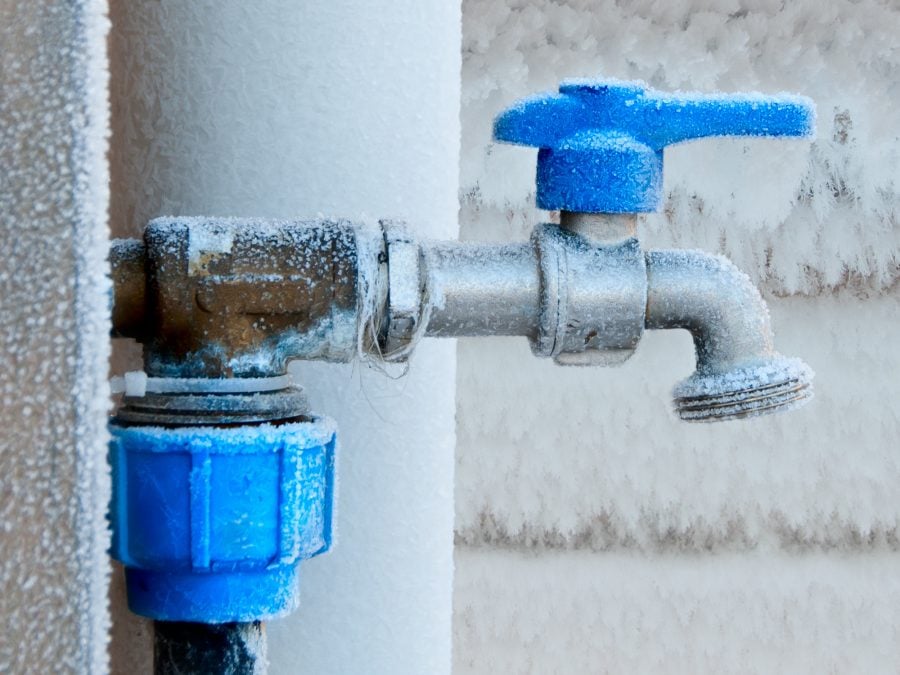Key Strategies for Avoiding Frozen Plumbing in Cold Weather
Key Strategies for Avoiding Frozen Plumbing in Cold Weather
Blog Article
We have encountered the article relating to Winter Plumbing Precautions: Preventing Frozen Pipes below on the internet and concluded it made perfect sense to relate it with you on this site.

Cold weather can damage your plumbing, specifically by freezing pipes. Right here's how to prevent it from happening and what to do if it does.
Introduction
As temperatures drop, the danger of icy pipes increases, possibly causing costly repair work and water damages. Comprehending how to avoid icy pipes is crucial for homeowners in cold environments.
Avoidance Tips
Shielding vulnerable pipelines
Cover pipes in insulation sleeves or use heat tape to shield them from freezing temperatures. Concentrate on pipelines in unheated or exterior locations of the home.
Heating strategies
Keep indoor areas effectively heated up, especially locations with plumbing. Open up cabinet doors to enable warm air to flow around pipes under sinks.
How to recognize icy pipelines
Search for lowered water flow from taps, unusual smells or noises from pipes, and visible frost on subjected pipes.
Long-Term Solutions
Architectural modifications
Consider rerouting pipes far from exterior wall surfaces or unheated areas. Include additional insulation to attics, cellars, and crawl spaces.
Updating insulation
Buy high-grade insulation for pipes, attic rooms, and wall surfaces. Correct insulation assists maintain constant temperature levels and decreases the danger of frozen pipes.
Protecting Exterior Pipes
Yard hoses and outside taps
Separate and drain yard tubes prior to winter season. Mount frost-proof spigots or cover outdoor faucets with shielded caps.
Comprehending Icy Pipelines
What triggers pipelines to ice up?
Pipelines freeze when exposed to temperature levels listed below 32 ° F (0 ° C) for expanded periods. As water inside the pipelines freezes, it increases, putting pressure on the pipeline walls and potentially triggering them to burst.
Dangers and problems
Frozen pipes can result in water system interruptions, building damages, and costly repair work. Ruptured pipelines can flood homes and cause extensive architectural damage.
Indicators of Frozen Pipeline
Identifying icy pipelines early can prevent them from rupturing.
What to Do If Your Pipes Freeze
Immediate activities to take
If you believe icy pipes, keep faucets open up to alleviate pressure as the ice thaws. Utilize a hairdryer or towels taken in warm water to thaw pipelines gradually.
Conclusion
Protecting against frozen pipes requires proactive actions and quick reactions. By understanding the causes, indications, and preventive measures, house owners can protect their pipes throughout cold weather.
5 Ways to Prevent Frozen Pipes
Drain Outdoor Faucets and Disconnect Hoses
First, close the shut-off valve that controls the flow of water in the pipe to your outdoor faucet. Then, head outside to disconnect and drain your hose and open the outdoor faucet to allow the water to completely drain out of the line. Turn off the faucet when done. Finally, head back to the shut-off valve and drain the remaining water inside the pipe into a bucket or container. Additionally, if you have a home irrigation system, you should consider hiring an expert to clear the system of water each year.
Insulate Pipes
One of the best and most cost-effective methods for preventing frozen water pipes is to wrap your pipes with insulation. This is especially important for areas in your home that aren’t exposed to heat, such as an attic. We suggest using foam sleeves, which can typically be found at your local hardware store.
Keep Heat Running at 65
Your pipes are located inside your walls, and the temperature there is much colder than the rest of the house. To prevent your pipes from freezing, The Insurance Information Institute suggests that you keep your home heated to at least 65 degrees, even when traveling. You may want to invest in smart devices that can keep an eye on the temperature in your home while you’re away.
Leave Water Dripping
Moving water — even a small trickle — can prevent ice from forming inside your pipes. When freezing temps are imminent, start a drip of water from all faucets that serve exposed pipes. Leaving a few faucets running will also help relieve pressure inside the pipes and help prevent a rupture if the water inside freezes.
Open Cupboard Doors
Warm your kitchen and bathroom pipes by opening cupboards and vanities. You should also leave your interior doors ajar to help warm air circulate evenly throughout your home.

As a devoted reader on Winter Plumbing Precautions: Preventing Frozen Pipes, I was thinking sharing that editorial was worth the trouble. If you please take the time to promote this blog posting if you enjoyed it. I praise you for your time. Return soon.
At This Website Report this page